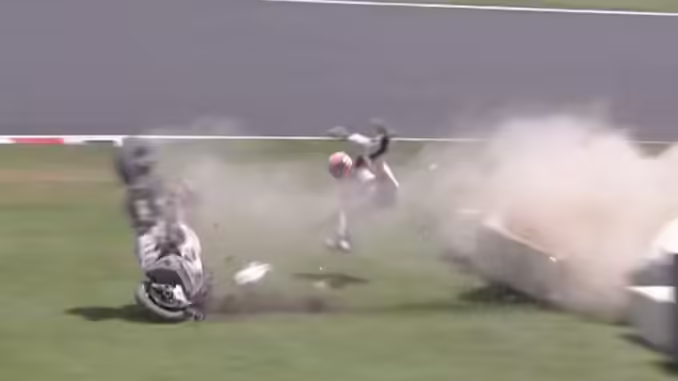
In a recent development in the world of motor sports, Honda Racing Corporation (HRC) has issued a public apology to former MotoGP world champion Casey Stoner following a serious accident during the Suzuka 8-Hour endurance race. The crash, which occurred on July 26, 2015, was a significant and unfortunate event for both Stoner and the Honda team.
Stoner, who was competing in his first race since retiring from MotoGP in 2012, was leading the prestigious Suzuka 8-Hour race when disaster struck. As he approached a hairpin bend, his bike veered off course, resulting in a high-impact crash that left him with a broken right shoulder blade and a fractured left ankle. The accident not only ended Stoner’s race but also dashed the hopes of his team, MuSASHI RT HARC-PRO, who had been counting on him for a potential victory.
The Suzuka 8-Hour race is renowned for its grueling demands and high levels of competition, making any form of mechanical failure particularly impactful. In the wake of the crash, there was considerable concern and speculation about what might have caused Stoner’s sudden and dramatic loss of control. Honda Racing Corporation undertook a thorough investigation into the incident, which led to a significant revelation.
On July 29, 2015, HRC announced that a malfunctioning throttle was behind Stoner’s crash. According to their detailed analysis, a problem with the throttle cable had contributed to the accident. This was a troubling discovery for the team, as it was revealed that this type of malfunction had not occurred before. The throttle issue not only affected Stoner’s performance but also posed a serious risk to his safety.
In response to the findings, Honda Racing Corporation issued a formal apology to Casey Stoner. The apology expressed regret for the accident and acknowledged the role that the throttle malfunction played in the crash. HRC stated that they would cease using the problematic throttle specification and work on designing a new, more reliable version for future endurance races. This commitment to improving their equipment underscores Honda’s dedication to both performance and safety.
The apology also included a note of gratitude to Stoner for his participation in the Suzuka 8-Hour event. Despite the unfortunate circumstances, Stoner’s return to competitive racing was a noteworthy and highly anticipated event. The crash not only affected him personally but also had implications for his team and the broader racing community.
Honda’s acknowledgment of the throttle malfunction and their subsequent actions reflect the high standards and accountability expected in the world of motor sports. The incident serves as a reminder of the inherent risks in racing and the critical importance of rigorous equipment testing and maintenance.
Casey Stoner’s accident at the Suzuka 8-Hour race is a poignant moment in motor sports history, highlighting both the excitement and dangers of endurance racing. While the crash was a setback for Stoner and his team, it also catalyzed improvements in safety and performance standards within the industry. Honda’s swift response and commitment to addressing the issue are steps toward preventing similar incidents in the future, ensuring that the focus remains on the thrilling and competitive spirit of the sport.
Be the first to comment